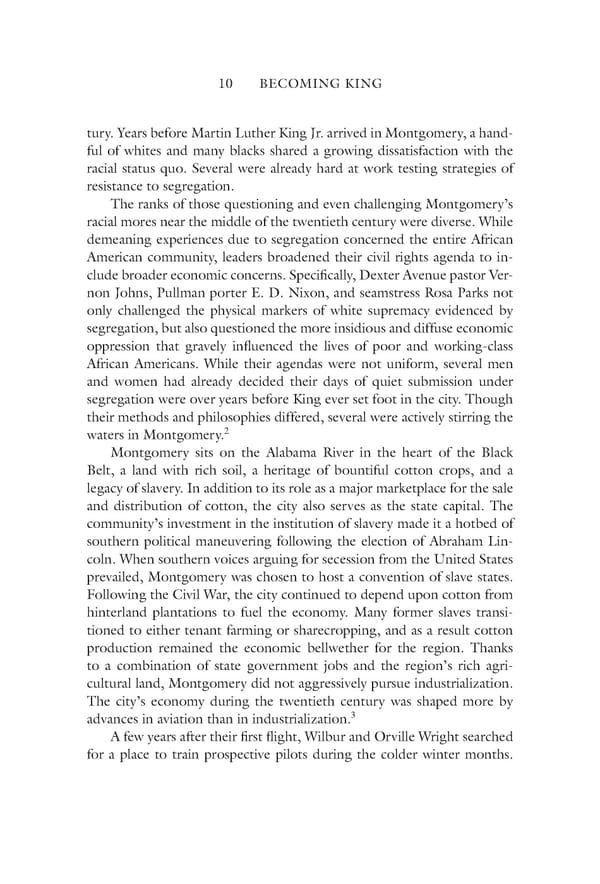10 BECOMING KING tury. Years before Martin Luther King Jr. arrived in Montgomery, a hand- ful of whites and many blacks shared a growing dissatisfaction with the racial status quo. Several were already hard at work testing strategies of resistance to segregation. The ranks of those questioning and even challenging Montgomery’s racial mores near the middle of the twentieth century were diverse. While demeaning experiences due to segregation concerned the entire African American community, leaders broadened their civil rights agenda to in- clude broader economic concerns. Specifically, Dexter Avenue pastor Ver- non Johns, Pullman porter E. D. Nixon, and seamstress Rosa Parks not only challenged the physical markers of white supremacy evidenced by segregation, but also questioned the more insidious and diffuse economic oppression that gravely influenced the lives of poor and working-class African Americans. While their agendas were not uniform, several men and women had already decided their days of quiet submission under segregation were over years before King ever set foot in the city. Though their methods and philosophies differed, several were actively stirring the 2 waters in Montgomery. Montgomery sits on the Alabama River in the heart of the Black Belt, a land with rich soil, a heritage of bountiful cotton crops, and a legacy of slavery. In addition to its role as a major marketplace for the sale and distribution of cotton, the city also serves as the state capital. The community’s investment in the institution of slavery made it a hotbed of southern political maneuvering following the election of Abraham Lin- coln. When southern voices arguing for secession from the United States prevailed, Montgomery was chosen to host a convention of slave states. Following the Civil War, the city continued to depend upon cotton from hinterland plantations to fuel the economy. Many former slaves transi- tioned to either tenant farming or sharecropping, and as a result cotton production remained the economic bellwether for the region. Thanks to a combination of state government jobs and the region’s rich agri- cultural land, Montgomery did not aggressively pursue industrialization. The city’s economy during the twentieth century was shaped more by 3 advances in aviation than in industrialization. A few years after their first flight, Wilbur and Orville Wright searched for a place to train prospective pilots during the colder winter months.
 Becoming King: Martin Luther King Jr. Page 30 Page 32
Becoming King: Martin Luther King Jr. Page 30 Page 32